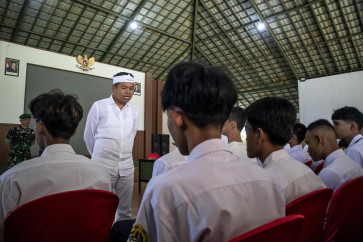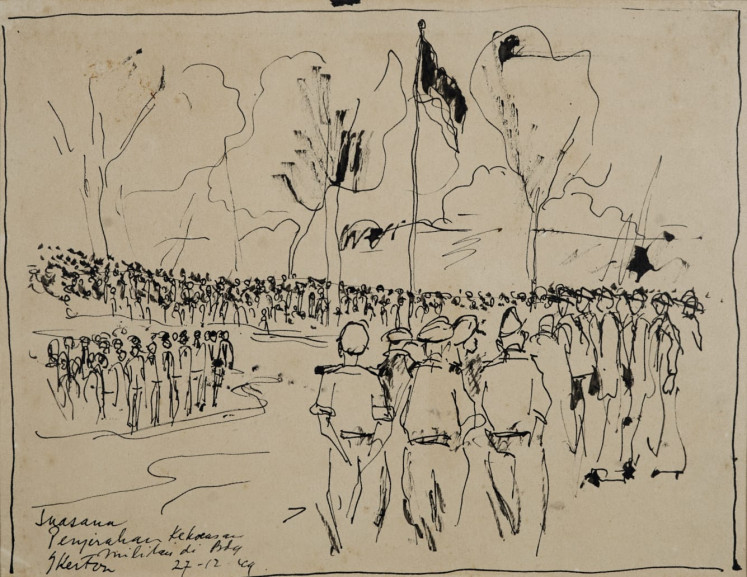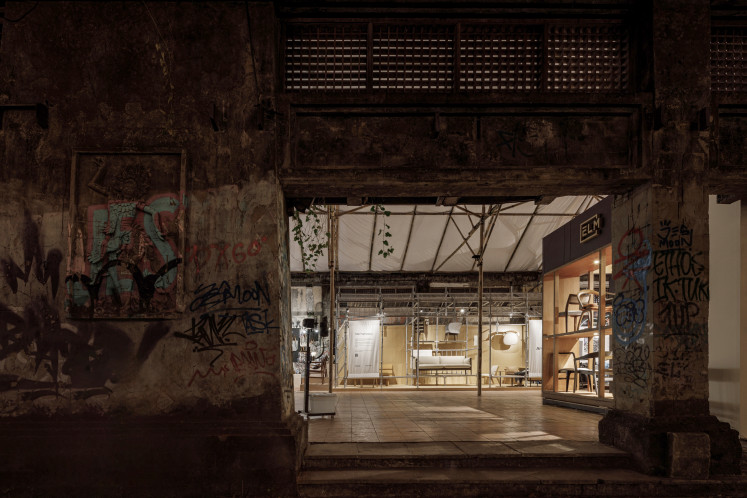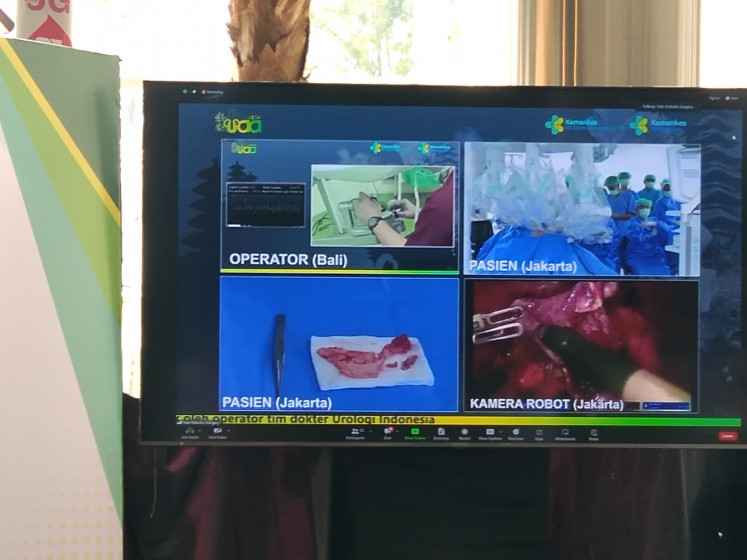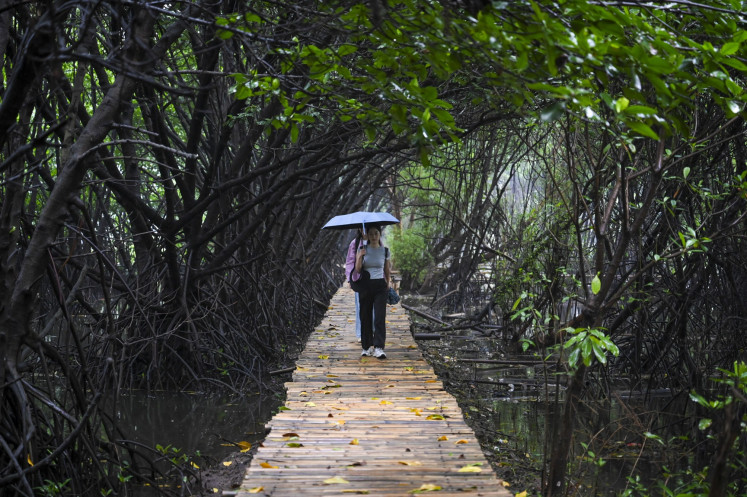Popular Reads
Top Results
Can't find what you're looking for?
View all search resultsPopular Reads
Top Results
Can't find what you're looking for?
View all search resultsBali Arts Festival: Ensures relevance of island's traditional arts
Change text size
Gift Premium Articles
to Anyone
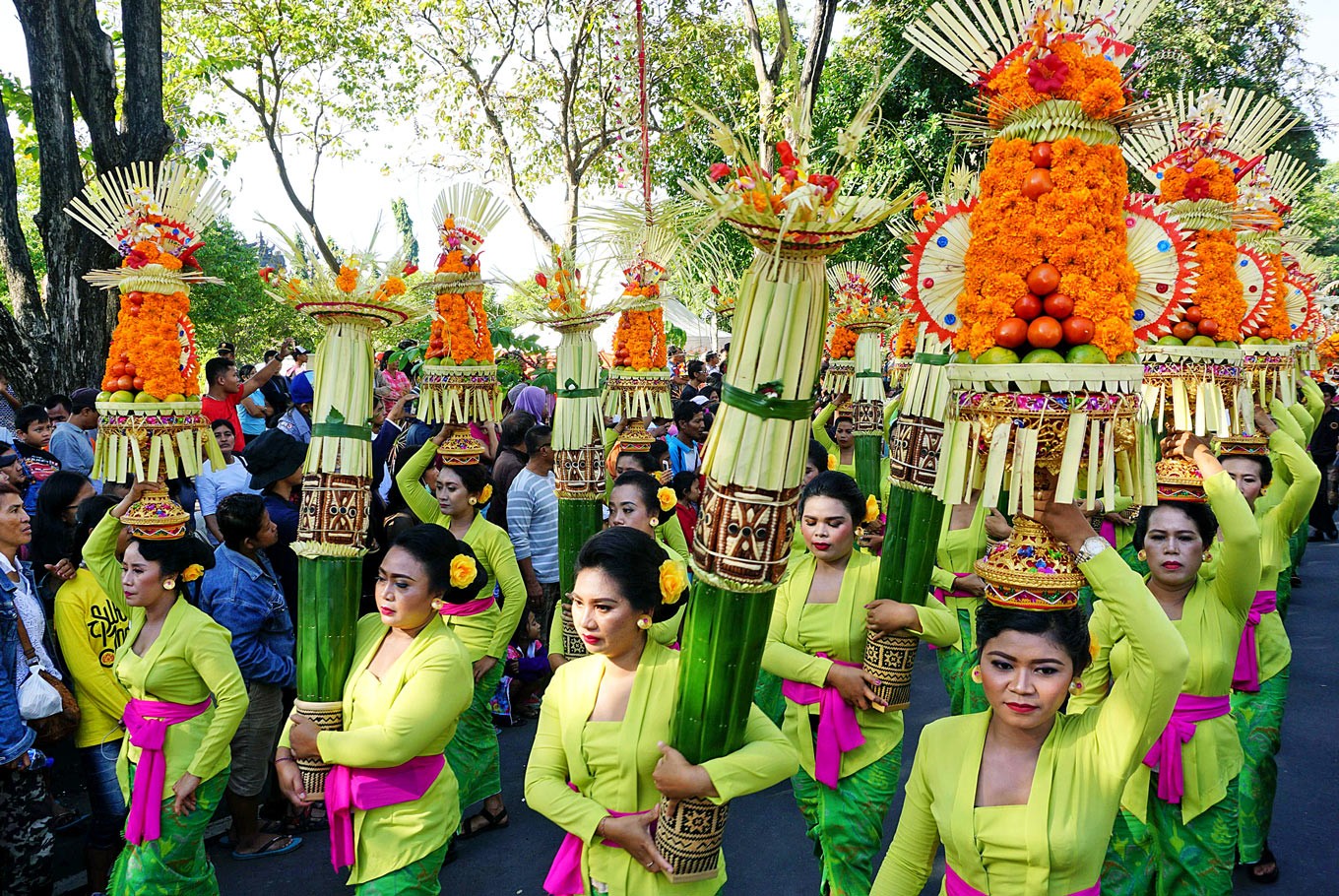 Gorgeous: Women carry beautiful flower offerings during a street parade marking the opening of the 2017 Bali Arts Festival. (JP/Ni Komang Erviani)
Gorgeous: Women carry beautiful flower offerings during a street parade marking the opening of the 2017 Bali Arts Festival. (JP/Ni Komang Erviani)
The annual festival is still going strong in its 39th year.
It was early evening and the exhibition hall on the ground floor of the Ksirarnawa building was packed with visitors, mostly young girls and housewives, browsing through stalls showcasing silver and gold jewelry crafted by local artisans.
The narrow alleyway, barely able to accommodate two persons passing each other, and the absence of any air-conditioning system in the hall, did not diminish the visitors’ enthusiasm for the glittering rings, necklaces, brooches, pendants and other trinkets on display.
Suddenly, to the amazement of the crowd, a little boy wearing the mask of barong — a mythological beast and one of the island’s most iconic dances — dashed along the alleyway, his hands frantically animating the mask while his father followed him closely. In a hushed voice, the father apologized to the other visitors for his son’s sudden outburst.
“I am sorry. He insisted I buy him the mask just now and he has worn it ever since.”
It was an unnecessary apology since everybody was obviously amused by the episode. Some cheered the boy up and one lady even uttered a prophecy.
“That boy will grow up to be a great pregina,” she said, using the Balinese term for an art performer.
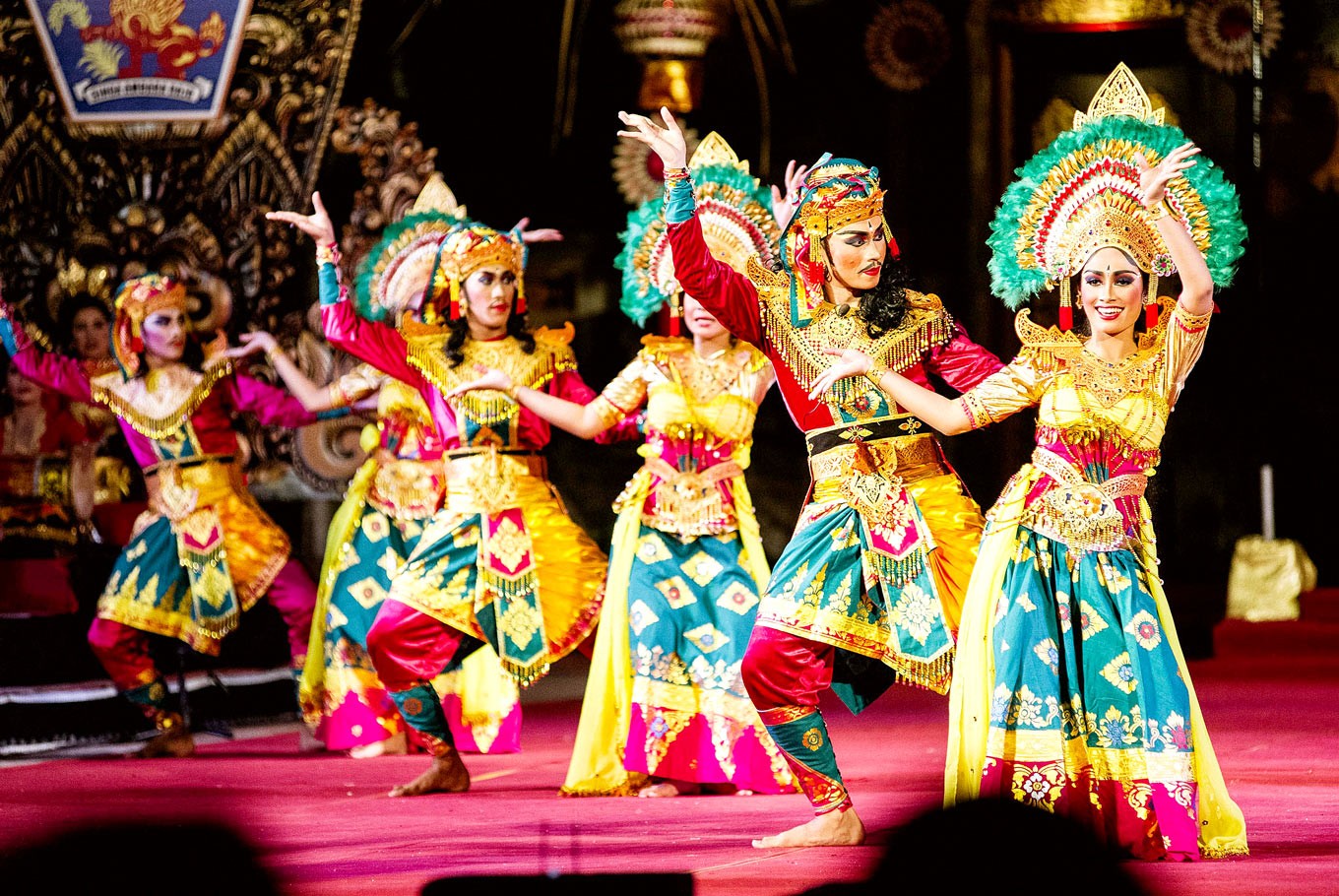
This atmosphere of jovial enthusiasm is not exclusive to that exhibition hall. In fact, this atmosphere pervades every venue at the Werddhi Budaya Art Center, the spacious cultural compound in East Denpasar that hosts the ongoing Bali Arts Festival. The annual event enters its 39th year this year, making it Indonesia’s longest-running arts festival.
Some 100 meters to the east from Ksirarnawa building, a similar enthusiasm could be seen on the faces of hundreds of spectators, including many youngsters, who crowded Kalangan Angsoka, one of the center’s three mid-size outdoor stages.
Read also: ‘Rebirth’ shows promise of youngest Titian Prize finalist
The reason for these youngsters’ radiant faces was not a modern boy band belting out the latest of Korean music or a handsome, hip DJ. In fact, these youngsters were eagerly watching a performance of Gambuh, a classical dance drama and one of the island’s oldest forms of performance art.
The fact that a large number of millennials can actually have a good time watching a slow-paced dance drama originally created in the 15th century might seem like a cultural anomaly. Fortunately, here in Bali, it is the norm instead of an exception.
“Traditional art is everywhere in Bali. You can find it in temple festivals, community functions, government events and private parties. Balinese people practically grow up and live in and within a stage of performance art,” scholar I Made Bandem said.
Bali’s traditional arts are not a static entity. The challenges brought about by changing times have spurred local artists to be more innovative in order to stay relevant. It is quite common for performers to incorporate contemporary issues, from the country’s political ironies to millennials’ social media addiction, into dance dramas inspired by Hindu epics written centuries ago.
Read also: Bali's water question
“This ability to adapt and innovate both in form and substance is another key reason why Balinese traditional arts have succeeded in riding the waves of times,” Bandem added.
Another factor is the fact that most of the more than 10,000 performing art troupes in Bali are closely associated with the local banjar (traditional hamlet) and desa pekraman (traditional village), making these troupes an extension of their respective communities’ cultural pride and accomplishments.
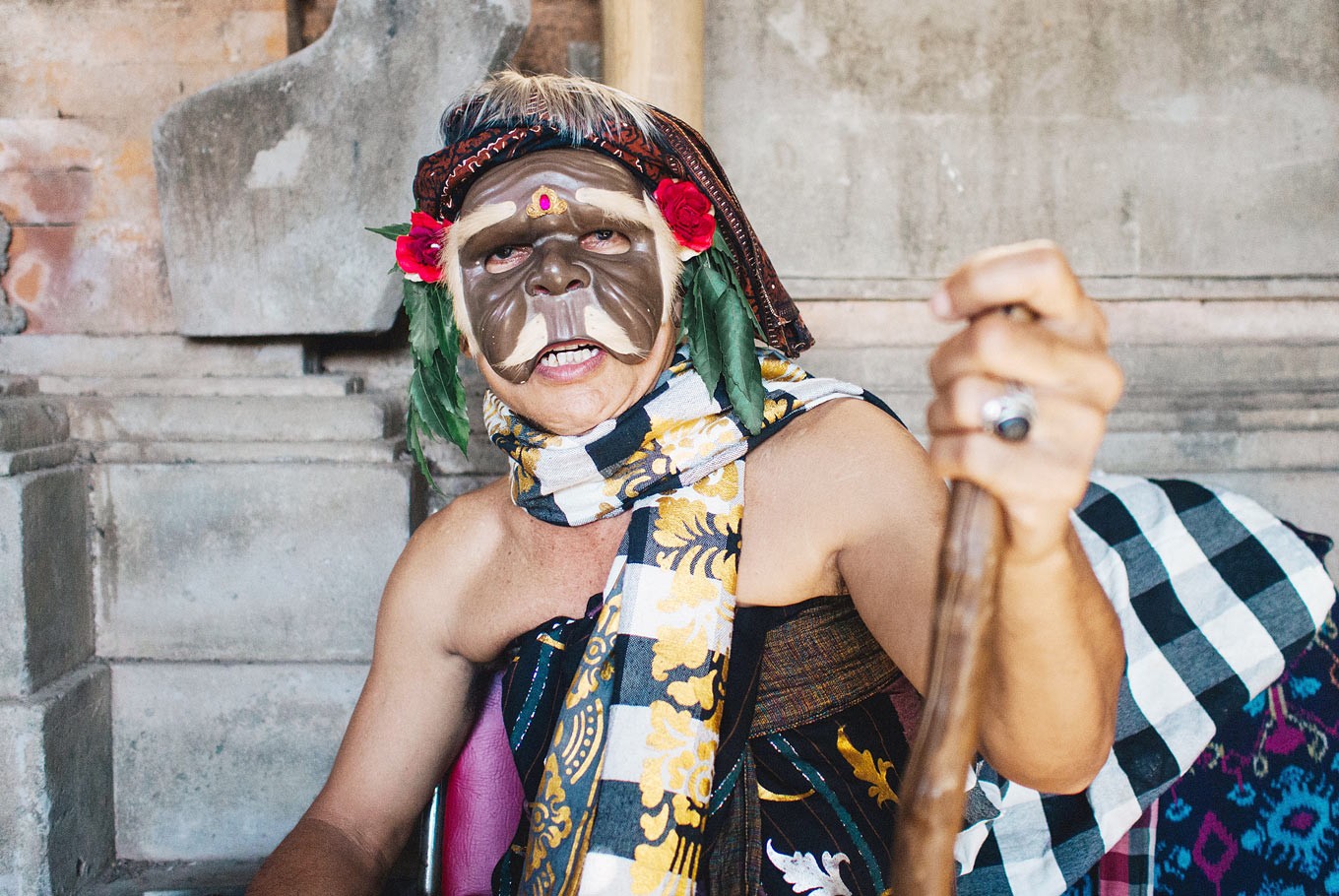
This emotional connection is quite visible in the Bali Arts Festival, particularly when troupes from different regions share the same stage. An example of this is the gong kebyar gamelan festival, in which two troupes take turns performing throughout a single night at the large Ardha Chandra amphitheater. The performance always draws thousands of spectators, a large majority of whom hail from the home villages of the performing troupes.
“The Bali Arts Festival is the ultimate testament to the enduring ability of Balinese traditional arts to adapt, innovate and maintain the important affinity and emotional connection between the Balinese people, including and most importantly among the younger generation,” Bandem said.
The festival, which will run until July 8, presents 230 performances involving around 17,000 artists, as well as exhibitions, parades and seminars.
It also involves art troupes from several regions outside Bali and foreign artists from France, India, Japan, Timor Leste and Tunisia.
Initially conceived in the late 1970s by then Bali governor Ida Bagus Mantra as a platform to showcase the island’s artistic masterpieces and cultural legacy, the Bali Arts Festival has played a pivotal role in ensuring the survival and relevance of Balinese traditional arts in the 21th century.

